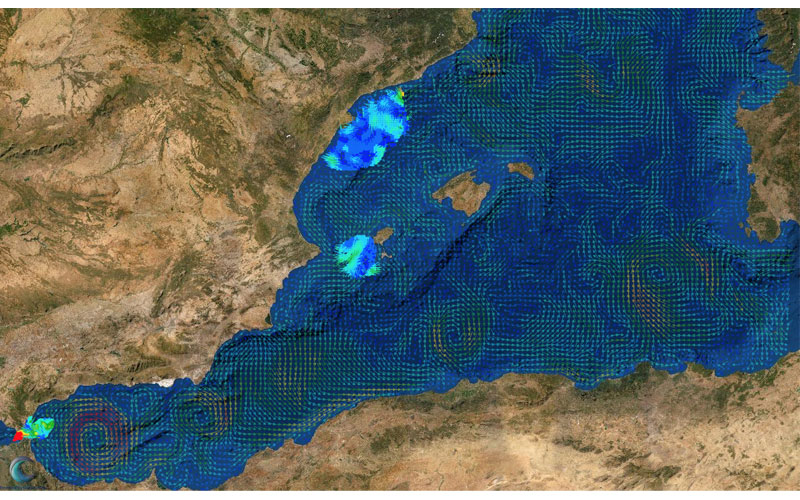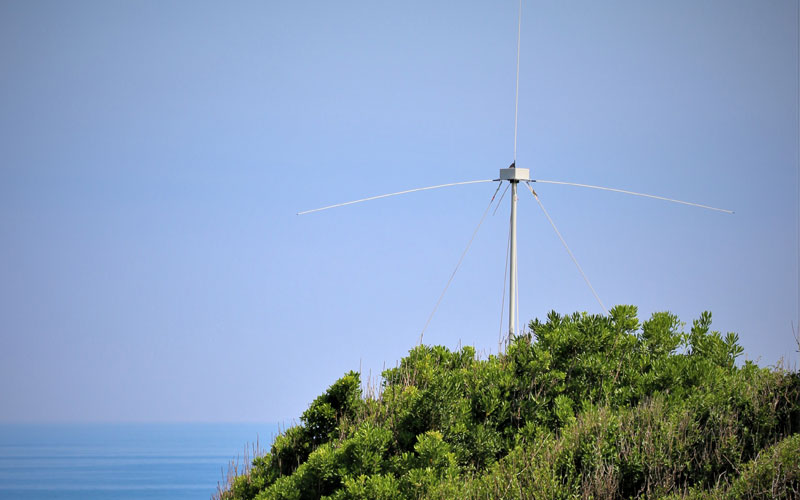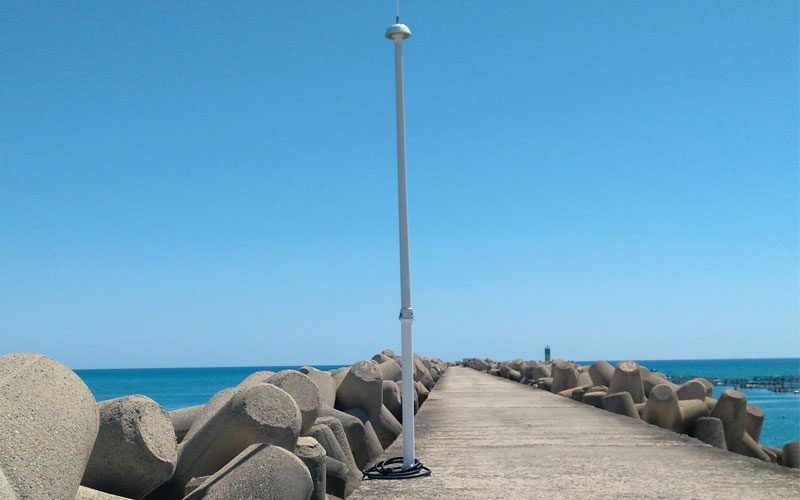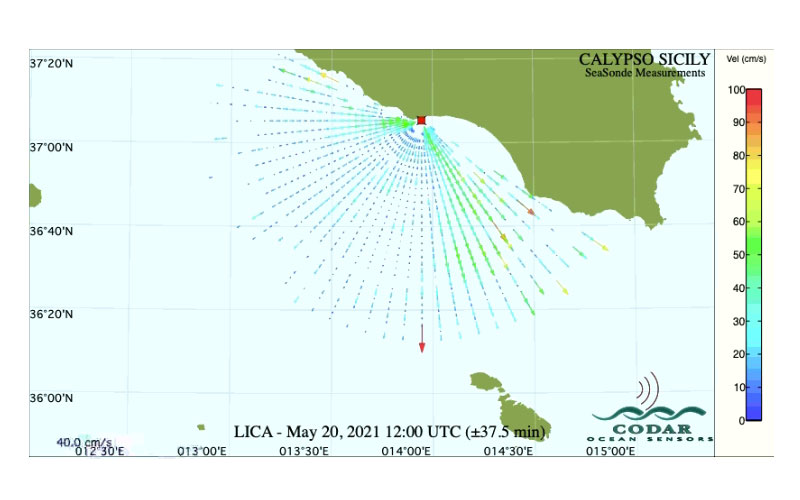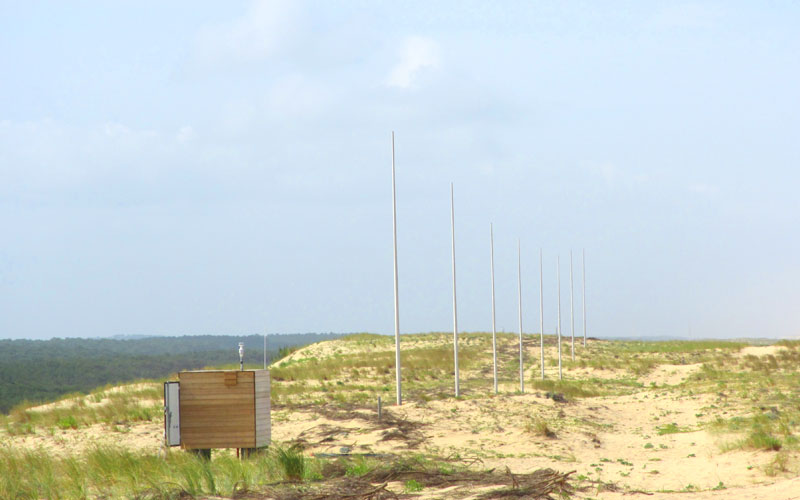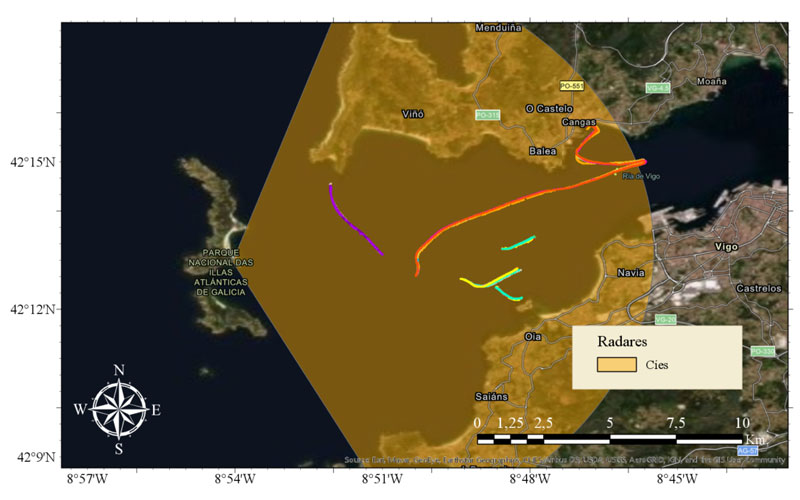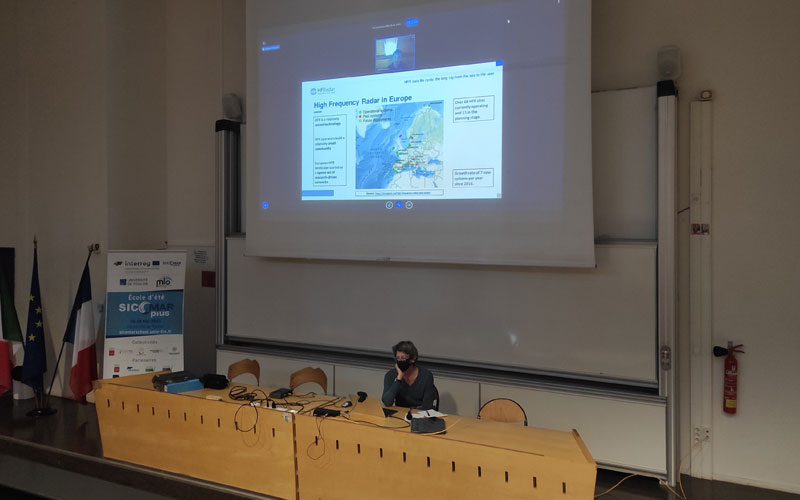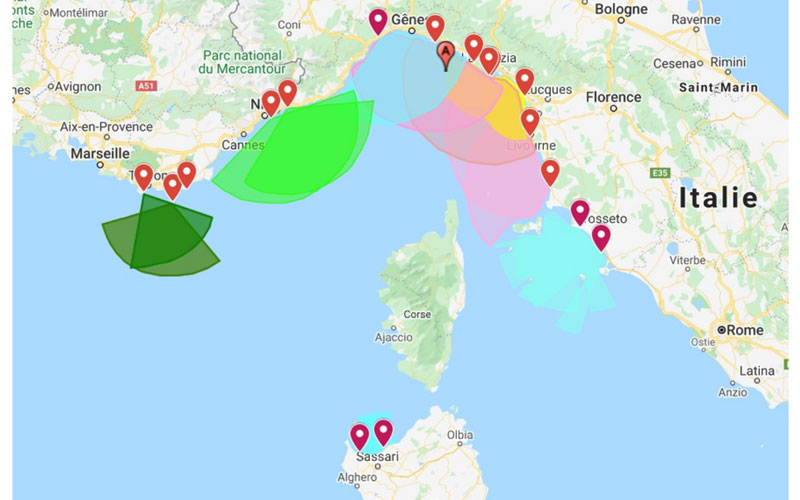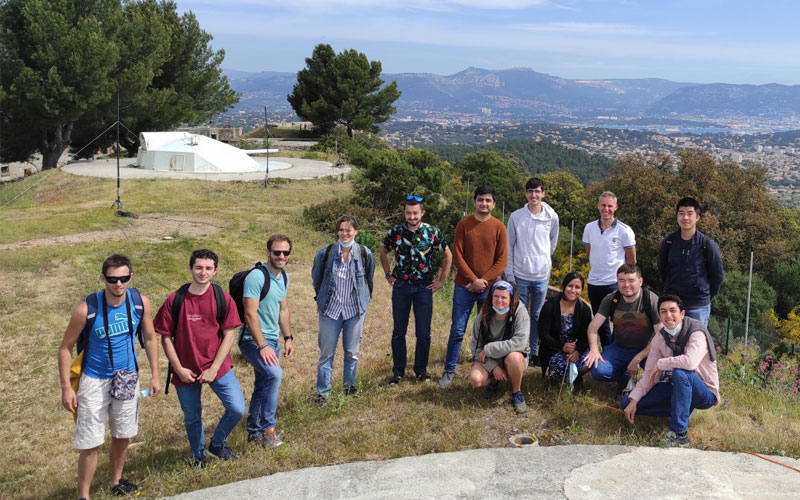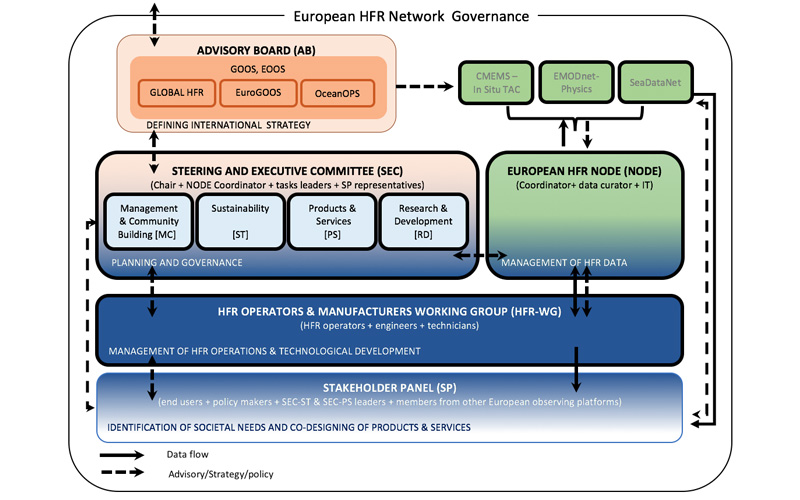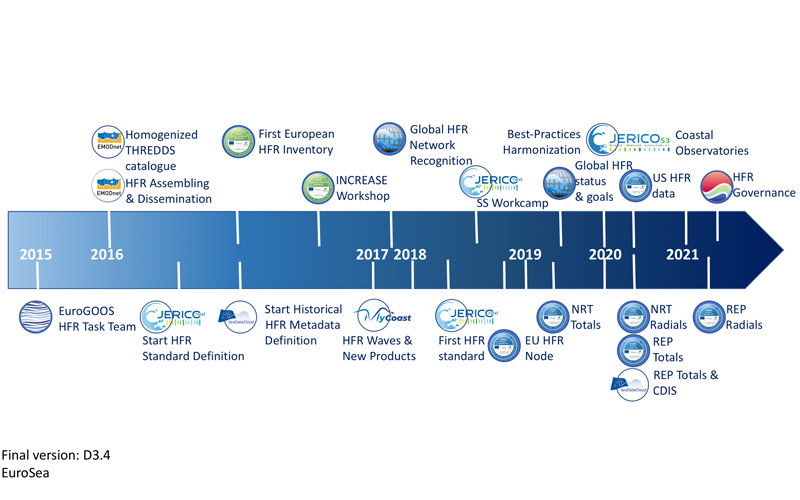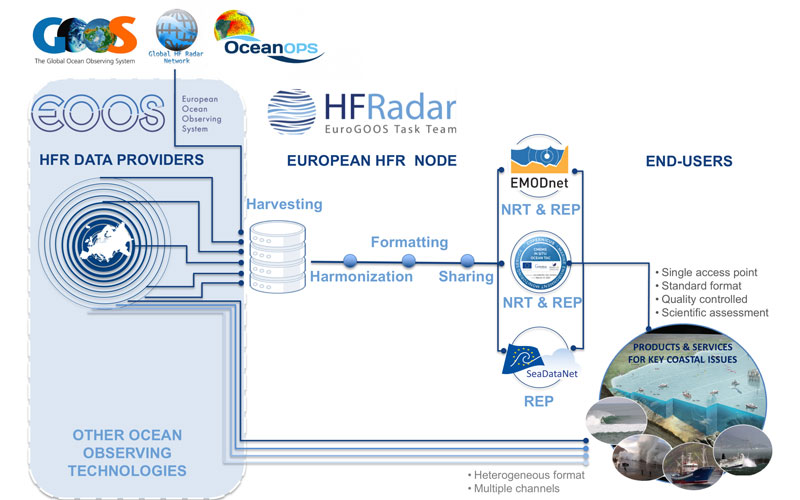High-frequency radar (HFR) is a unique technology mapping ocean surface currents and wave fields (along with other variables) over wide areas with high spatial and temporal resolution. HFR systems can cover the gaps that other remote or in-situ technologies have in coastal areas, such as satellite altimetry of moorings. HFR can provide data in near real time so they have become invaluable tools in the field of operational oceanography, with multiple applications for the maritime sector: coastal marine environment, research, rescue, navigation… in the HFR is cost-effective, requiring only small manpower and technical costs. (Abascal et al., 2012; Paduan and Washburn, 2013; Wyatt, 2014) Moreover, these data also have a great interest for the validation and calibration of numerical ocean forecasting models, especially near the coast.
Users of HFR technology include meteorology services, search and rescue agencies, governments and regional and local authorities, as well as private companies working in assessment of coastal water quality, renewable energy, or other environmental services.
OPERATING PRINCIPLES
HF radar relies on resonant backscatter resulting from coherent reflection of the transmitted wave by the ocean waves whose wavelength is ½ of that of the transmitted wave. The energy reflected at one wave crest is in phase with the emitted wave. This is the Brags scattering phenomena and it results in the 1st order peak of the received (backscattered) spectrum (Paduan and Graber, 1997). In the absence of currents, the frequency of the 1st order peak has a Doppler shift caused by the phase velocity (speed) of the waves in the radial direction of the transmitting antenna. This speed (Vg) is known since it is the wave propagation speed (for waves with ½ wavelength of the emitted wave) and it is given by the dispersion relation in deep waters:
Vg = (g * L / 2Π)1/2= (g/k)1/2
Where: L = wavelength / g = gravity / k= wave number
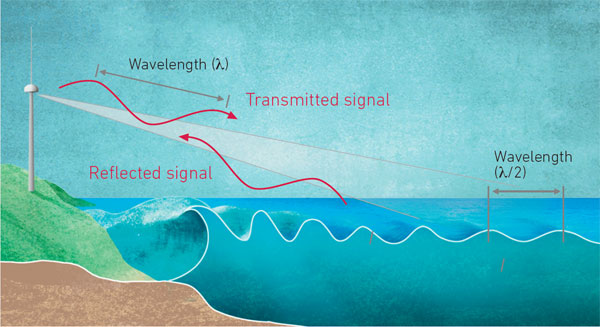
The Doppler shift is presented in the two peaks of the spectrum of the received signal (associated with the waves traveling towards and away from the radar), symmetrically situated on either sides of the frequency. If gravitational waves are propagated over a current field, the peaks are shifted in the frequency domain and an asymmetric spectrum is obtained. The radial component of the current, which is the current in the same direction than the signal, can be directly calculated from the speed difference between the theoretical speed of the waves, for the given wavelength, and the velocity observed through the spectrum; the difference in speed is the speed of the current.
For a more detailed description of HF radar technology, the reader is referred to Paduan and Rosenfeld (1996) and Paduan and Graber (1997).
Photo gallery


